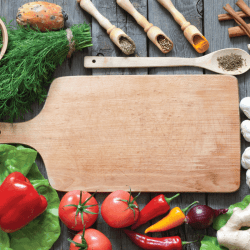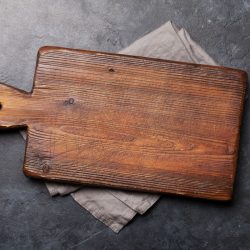Few things are as practical in a kitchen as a cutting board. After all, it provides you with a durable surface, keeps the counter clean, protects your health and even the knife blades. Thus, it might disappoint you to hear that cleaning these powerhouses is not as simple as throwing them into the dishwasher. But if not the dishwasher, then what? Let us find out.
Dishwashers are generally unsafe for cutting boards due to their high heat and pressure concentration. Their use varies with different cutting board materials and their surface structure. You will have to keep away boards with porous surfaces like wood and bamboo from high temperatures. However, for non-porous surfaces like plastic, it may work temporarily but cause long-term disadvantages.
You can protect your cutting board with the knowledge of materials that are suitable for a dishwasher. However, without knowing the alternative methods, you cannot sustain them in good condition. Keep reading to find out more.

Is it Safe To Clean a Cutting Board with Bleach?
There are no hazards for cleaning a cutting board with bleach. However, there is the risk of inadequate standards of cleaning. Bleach is a powerful disinfectant but not as good of a cleaning agent. Applying it will rid your board of all harmful bacteria and sanitize it. Yet, you will need to handwash the board afterward to clear off waste, stains, and dirt.
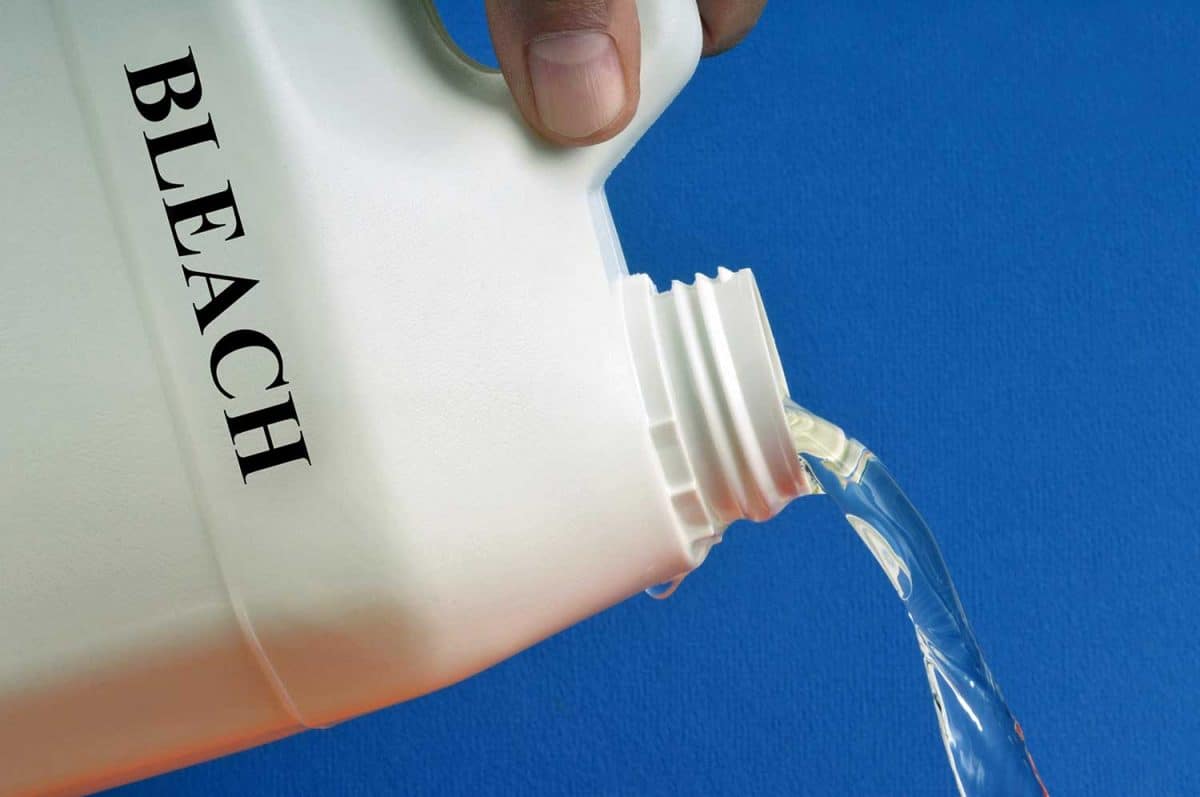
How do you sanitize a cutting board?
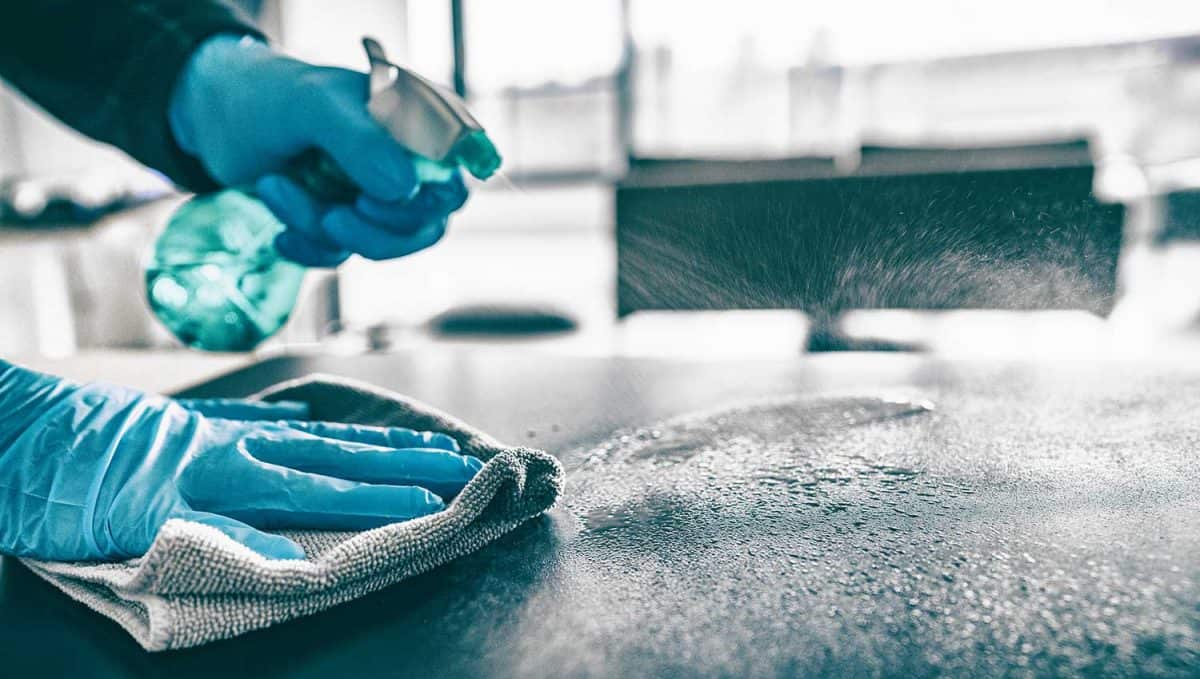
Sanitizing the cutting boards would reduce the likelihood of exposing your food to pathogens and inhibit their growth lest they turn the environment unhygienic.
Here's how you can sanitize your cutting boards:
- After washing the cutting board, spray it with a liquid sanitizer. Let it remain overnight so that the antimicrobial capacity of the liquid has time to gain effect. Be sure to rinse it with water before use.
- Use a chlorine-based bleach solution to disinfect. Take a tablespoon of bleach for every 1 gallon of water. Soak the board in for 5-10 minutes. As bleach has corrosive properties, do not prolong the exposure and wash out immediately.
- Apply household cleaning agents with antimicrobial properties like vinegar or ethanol.
Plastic Cutting Boards
Click here to see this cutting board on Amazon.
Plastic cutting boards have a tighter cell structure than most other materials, making them impermeable to moisture or bacteria. Thus, they are safe to put inside a dishwasher without bearing any cracks.
While the non-porous structure makes it safer, it also makes it vulnerable. The more you use your knife against the surface, the more the scratches and grooves for bacteria to grow. This process leads to food contamination both by pathogens and chipped plastic pieces.
How to Clean A Plastic Board?
A dishwasher may clean the board on a surface level, but it cannot reach every fracture. With the proper cleaning method, you can easily bypass all of the plastics' potential hazards.
- Scrub off all debris from the board using soap and water. Next, spray a small amount of white vinegar all over and let it rest. Alternatively, you could soak it in an aqueous solution of vinegar. Wash off after 5 minutes.
- After basic washing, use 3% hydrogen peroxide to straight-up inhibit all growth for bacteria. Wash it off after 2-3 minutes. You may find discoloration or damage to the board if you let it sit too long.
How do you get stains out of a plastic cutting board?
To rid your plastic cutting board of stains, make a disinfecting paste using the following guideline:
- Take one part each for baking soda, vinegar, and water.
- For an enhanced sterilizing effect, you may use a few drops of essential oil.
- Apply it to the whole board but rub greater volume on the areas particularly affected by stains.
- Let it remain for 5-10 minutes before rinsing with water.
- Ensure that you dry the board fast as moisture provides a breeding ground for bacteria.
Wood Cutting Boards
Click here to see this wooden cutting board on Amazon.
Wooden cutting boards are pleasing to the eye, resistant to cuts, and can even dual as a serving platter. Thus, wood is one of the most popular materials for boards but sadly, most neglected in its care.
The first rule here is to keep the wooden board outside a dishwasher. The intense heat and moisture from the washer are unsuitable for a porous surface like wood. They can cause it to warp and bear cracks. Cracks provide the sites for mold, mildew, and food-borne pathogens to grow. All in all, this mere washing technique can affect the board, your food as well as your health.
How Should You Clean a Wooden Cutting Board?
A wooden board will soak up all the ingredients you expose it to, which is why devising an efficient cleaning method is very important. You can achieve this by one of the following methods:
- Thoroughly clean out the board with soap and a sponge after each period of use. Never let leftovers remain for too long in the crevices lest they are absorbed within.
- Use fast-flowing water for the rinse to hinder bacteria growth on the board.
- After washing, dry up the board immediately. Prolonged exposure to moisture can result in cracks.
- For disinfection, use diluted vinegar or baking soda mixed in water.
- A commercial sanitizer like the Quaternary Ammonium sanitizer is ideal for porous surfaces. They are non-corrosive and do not cause crevices.
Oiling Wooden Boards
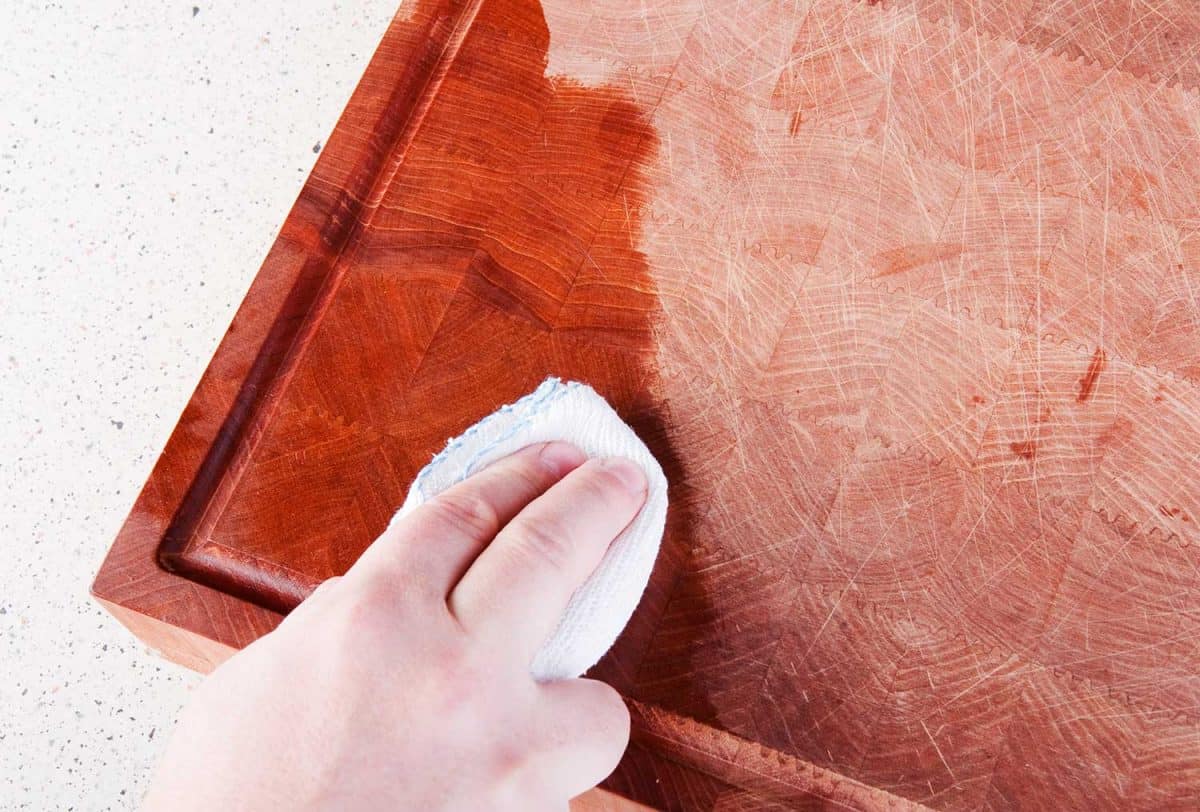
Seasoning a wooden board right is just as important as cleaning it. This step is a preliminary measure to ensure longevity. Additionally, it creates a barrier for water, meat juices, or moisture to pass while simultaneously fulfilling its hydration needs.
The following guide will help you create an oiling regime for the board:
- Choose your lubricant for seasoning. This lubricant can be any food-grade mineral oil, beeswax, or certified board oil.
- Take about ½ cup of the oil, put it on the stove, and allow it to heat up.
- Apply a thick layer over the dry bamboo board and rub it in a circular motion.
- Make sure you reach all crevices, sides, and corners of the board.
For more information on oiling cutting boards, check out our post here.
How do you get turmeric stains out of a wooden cutting board?
- Take one part baking soda and dilute it in two parts water/vinegar. Mix it thoroughly to get a paste and apply over stained areas.
- The acidity of lemon and vinegar together could discolor the stains if diluted with water. After application, let it absorb for a while before cleaning.
- Combine toothpaste and bleach, two strong alkalis with history as cleaning agents. If the stain is not very deep, you may use toothpaste as an individual agent too.
Bamboo Cutting Boards
Click here to see this bamboo cutting board on Amazon.
Bamboo may traditionally behave like wood, but it is a form of hardwood made of woody grass. Not only are they eco-friendly but also more rigid, hygienic, and safer for use than wooden boards. Yet, it is an easy target for damage inside a dishwasher.
Much adhesive, steam, and pressure go into producing the leveled surface of a bamboo board. This structure makes it vulnerable to the high temperature and moisture in a dishwasher. Some bamboo cutting boards are marked safe for dishwashers by their manufacturers. In that case, you may put it in but remember that it will begin to disintegrate after a few rounds.
How to Clean a Bamboo Cutting Board?
- Soak the board in soapy water. Grab a rag and rub the water all over in circular motions before rinsing.
- If you have stains on the board, apply baking soda and salt to them. After thorough rubbing, rinse off with soapy water.
- Clean off with one part vinegar and two parts water if the board has been in contact with meat or poultry.
- Always dry the board immediately after washing. Long-term soaking of moisture can cause it to warp and splinter.
Oiling Bamboo Boards
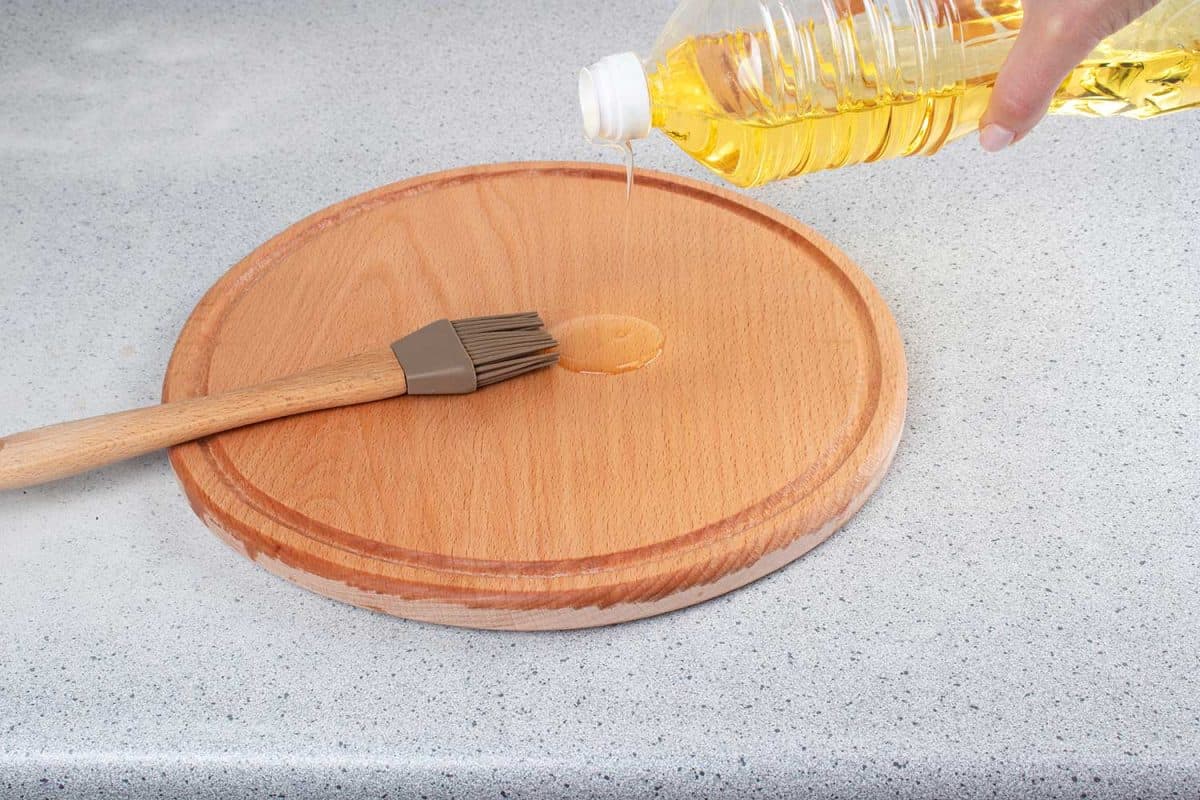
Should you devise an oiling routine for your bamboo board every two months, it will last you longer than standard. Excessive dryness or moisture both contribute to wood warping and the appearance of cracks. The cracks are home to bacteria.
Thus, when you fulfill the hydrating requirements of the surface yourself, it is better equipped to protect itself from external damages.
What is the best homemade disinfectant?
The best homemade disinfecting solutions are those which include bleach, vinegar, and alcohol. Each of these substances is an antimicrobial agent that is capable of disinfecting all sorts of surfaces. Some offer a compiled directory using each of the ingredients mentioned.
Generally, you take a set ratio of each substance and dilute it with water. For greater effectiveness, you can add complementary agents like hydrogen peroxide and essential oils. The mixture is then poured into a spray bottle and used accordingly.
Final Takeaway
Simply because a dishwasher is unsafe for cutting boards does not mean you can neglect its cleaning requirements. Remember that proper sanitation is key to the longevity of a cutting board. Before you go, are you wondering how long cutting boards last? We have the answer! For more information, check out our post here. Until next time!




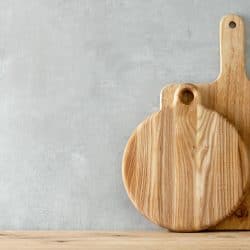
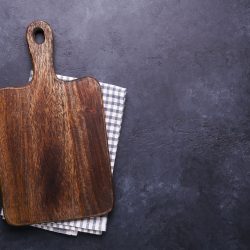
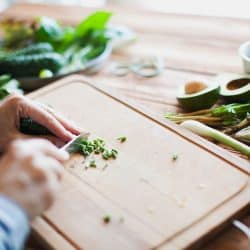
![Raw meat assortment - beef, lamb, chicken on a wooden board, Can You Cut Meat On A Wood Cutting Board? [Raw And Cooked]](https://kitchenseer.com/wp-content/uploads/2021/06/Raw-meat-assortment-beef-lamb-chicken-on-a-wooden-board-250x250.jpg)
